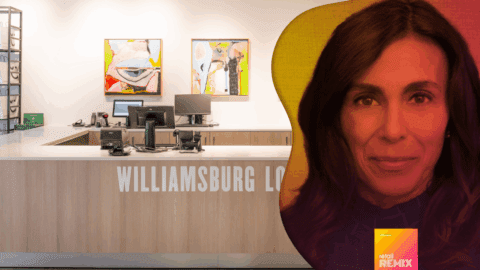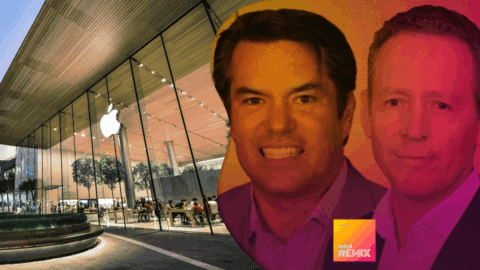The continued proliferation of digital applications, smartphones and tablets has encouraged retailers to rethink their in-store engagement strategies.
Best-in-class merchants are utilizing smartphones and tablets inside their stores’ four walls to access real-time information on inventory availability, as well as customer data to guide shoppers throughout the browsing and buying journey. However, there is a multitude of other tools and technologies available to make in-store experiences more interactive and educational, leading to increased loyalty and purchase rates, such as digital touch screens and self-serve kiosks.
While retail industry analysts stress the enterprise-wide benefits of implementing mobile devices and other interactive tools to boost customer interaction and enjoyment, many retailers are still struggling to do so.
In this Q&A, Leslie Hand, Research Director for IDC Retail Insights, shares a new framework to help retailers achieve in-store interactive retail. Hand also discusses how Cabela’s, Nordstrom and Urban Outfitters are utilizing mobility and other tactics to create more memorable customer experiences.
Retail TouchPoints (RTP): What is the current status of mobility in retail?
Leslie Hand: In past research, IDC asked retailers which ones of these four are the most impactful forces: Big Data, social, mobile and the cloud. Big Data placed at number one, while mobile slated at number two.
This makes sense because the ability to use high-speed analytics — and really make sense of Big Data — allows retailers to ensure they’re delivering a personalized customer experience and optimizing customer engagement opportunities. It also allows merchants to understand their shoppers better, which helps ensure more efficient assortment.
To that end, most retailers are prioritizing mobile to focus on making employees more productive and better armed to deliver more effective information to customers. Associate are utilizing mobile for inventory management, product look-up and/or orchestrating orders to fulfill a customer need if a product isn’t in the store. Retailers also are focused on extended customer engagement scenarios, which present opportunities for cross-sells and up-sells. In addition, there is a lot of discussion regarding mobile POS.
When IDC asked retailers to identify the biggest driver for mobility, they said improving customer loyalty. The promise of better inventory management and the ability to check out customers any time and anywhere allows retailers to provide a higher level of service.
RTP: What are the opportunities for retailers who are leveraging mobile devices in stores for further interactivity?
Hand: The opportunity for mobility relies on specific segments as well as store size. This is because big box retailers have a harder time rationalizing mobile payment versus inventory management, because inventory management remains a top challenge and priority for brands managing a lot of stores.
Similarly, some retailers can’t fathom utilizing an Apple store model, where store associates are helping and checking out customers with mobile devices. However, they can see facilitating faster checkout via mobile when there are long lines. Smaller, more service-level retailers want to utilize mobile POS to allow associates to work more closely with shoppers, help them find the products they need then instantly check them out.
Too many people have made assumptions that mobility is a one-size-fits-all scenario — it isn’t.
RTP: Are there any notable challenges or hurdles retailers indicated when it comes to mobility?
Hand: Before retailers can roll out a mobile app or any other form of technology, they must have the infrastructure in place to support back up wireless transactions in an efficient way — and this is the top deterrent for mobility.
Initially, big retailers also were looking into mobility and analyzing potential solutions and their capabilities. However, they weren’t finding unified platforms. Most of the larger retailers didn’t want to plug in another vendor’s capability that was going to be one more task for them to support, maintain and integrate. They were looking for solutions that would become an integral component of their paths forward.
I think the challenge was in finding options that weren’t necessarily just toolkits and custom development capabilities; a lot of merchants were waiting for the capabilities themselves to mature.
RTP: IDC has developed a maturity model for interactive retailing. Please tell us about this model and how will each phase helps retailers take a more tactical approach to in-store engagement.
Hand: This model isn’t applicable to just mobile; we wanted to create a more general model that could be utilized in different ways for interactive retail. The phases of this process are as follows:
Phase Zero: During this phase, the retailer wants to invite customers to start thinking about an extended product portfolio and receiving better service.
Phase One: In this “foundational stage” retailers begin to think about a roadmap to mobility or other technology rollout. They pinpoint an accurate starting priority and evaluate potential ROI for implementation with a pilot. Merchants then implement the infrastructure required for rollout, which may include device and software management, and wireless security applications, depending on the size of the enterprise.
Phase Two: After determining the highest priority and running a pilot, the specific initiative is rolled out in the “engage stage.” Here retailers are educating both store associates and consumers, and establishing familiarity inside stores to share information about the new technology.
Phase Three: The “empower stage” is when retailers move beyond the initial foray to determine value-added capabilities to stack onto existing technology.
Phase Four: During the “transform stage,” the retailer establishes fundamental requirements to create a solution that leads to more empowered store associates and shoppers. Retailers also determine how to transform the way associates engage customers in a way that is specific to a brand. For example, Cabela’s learns about its customers and their needs then interacts with them based on location, specific necessities and other factors. Whether it’s RFID or digital signage, this phase is the total immersion of social, mobile and local strategies.
RTP: Can you offer an example of a retailer that developed an efficient plan for mobility/interactive retail?
Hand: Home Depot has done a good job with its interactive retail strategy, which I discussed in a recent blog post. Another example is Nordstrom, who has surpassed many retailers from an engagement strategy perspective. The company evaluates its brand, what it represents, and why — from the very start — it has been seen as a high-service retailer. As consumers started to engage differently, the retailer determined how to ensure it still had that high-service reputation.
Five years ago Nordstrom was adopting new e-Commerce applications, and was one of the first to utilize omni-channel fulfillment strategies to improve inventory management and supply chain capabilities. Nordstrom also has mobile capabilities in stores. Initially, store associates were able to tap into inventory management and ordering solutions; now the retailer is using mobile POS. Nordstrom aims to service customers throughout the entire journey, from the fitting room to checkout.
Urban Outfitters also has been front and center with its mobile experience. The retailer works with Starmount to implement mobile POS in-store. Ultimately, the merchant’s goal is to eliminate cash registers and to fully mobile, such as an Apple store.
RTP: Are there any final recommendations or insights you’d like to share regarding mobility in the brick-and-mortar store environment?
Hand: I think retailers should do whatever it takes to move forward. A lot of retailers tell us [at IDC] that they’re facing struggles in determining ROI and the clear business case. But we urge them to start a pilot, determine the value for their companies and identify the benefits as they proceed.
Additionally, as they move forward with pilots, retailers will begin to refine how those business processes need to work within their organizations. The changes we’re seeing in retail are less about IT transformation and more about business transformation, because retailers are learning how to interact with shoppers in a new way.
In the beginning of the planning stages, retailers should have a clear idea of the capabilities they want to deploy because that will lead to the infrastructure needed. Retailers need to speak with platform providers who can help them with their vision and roadmap, and to understand the extended capabilities they’re going to need to be successful in the long term.












